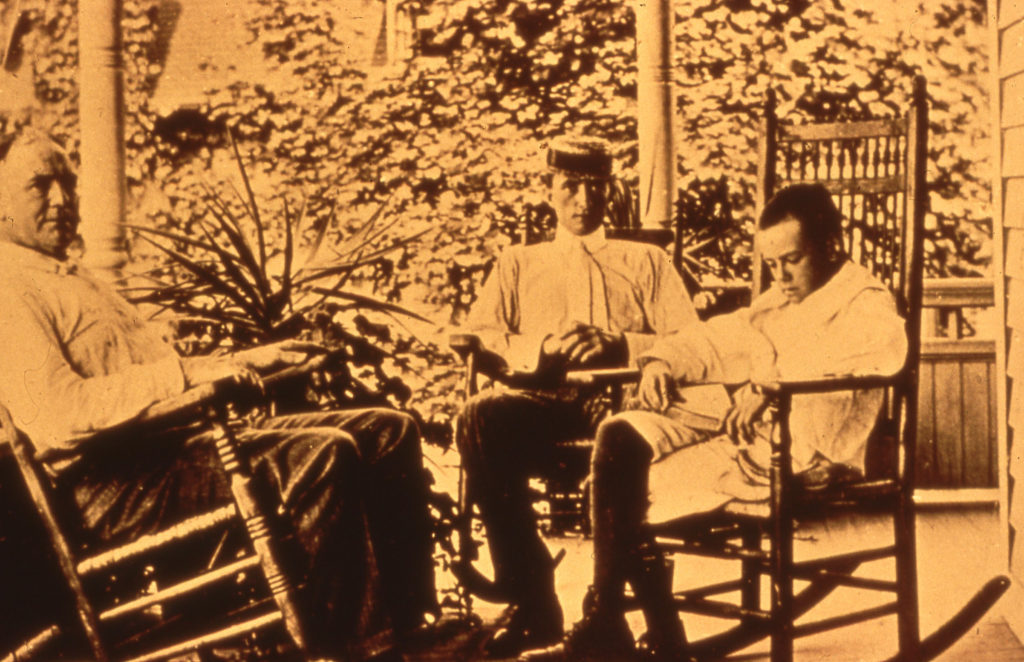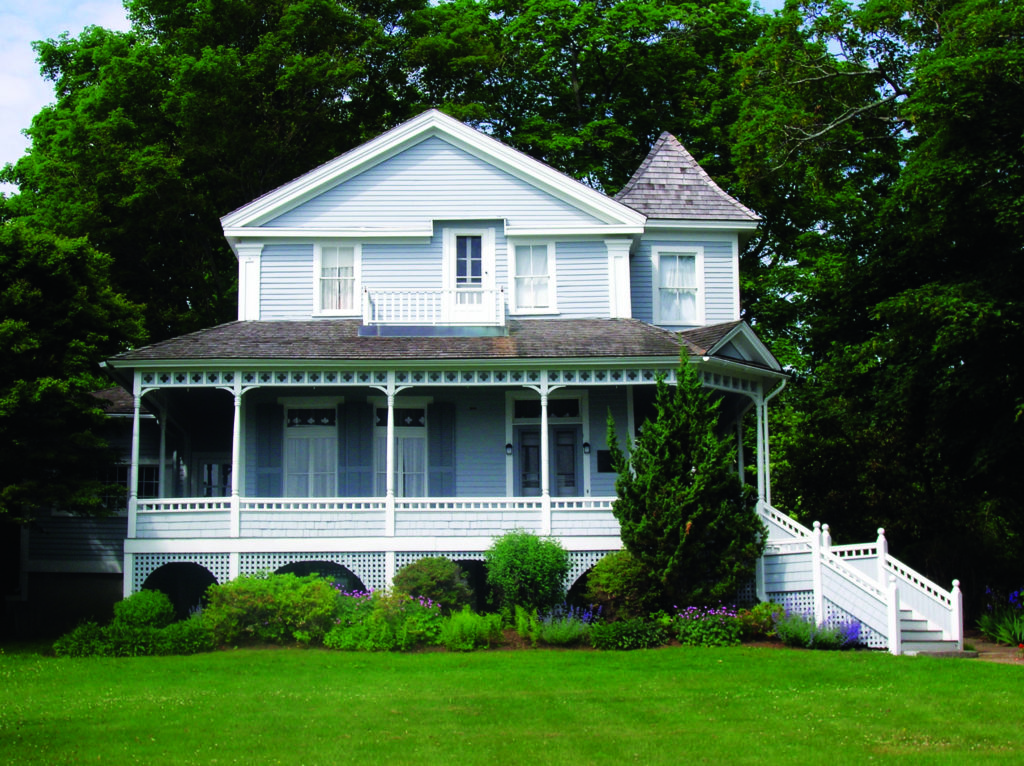
A young Eugene O’Neill on the porch of Monte Cristo Cottage, New London. Courtesy Eugene O’Neill Theater Center
By Emily Bloom-Shufrin, Sophie Gandler, and Matt Levy
(c) Connecticut Explored Inc. Summer 2013
Subscribe/Buy the Issue!
Located in New London near the mouth of the Thames River, the Monte Cristo Cottage was the summer boyhood home of Nobel Prize-winning playwright Eugene O’Neill (1888 – 1953), a pioneer of American theater and local legend. The importance of the cottage in the nation’s cultural heritage was recognized when it was designated a National Historic Landmark in 1971. The cottage and its surrounding community shaped O’Neill’s early life and career in the late 1800s and early 1900s, and thus, by extension, played a crucial role in a new era of American drama.
Eugene’s father James, a prominent stage actor most famous for his portrayal of the Count of Monte Cristo in Edmond Dantès’s adaptation of Alexandre Dumas’s novel, was responsible for both the architecture and the name of the cottage. While amassing a modest fortune as an actor and property owner, James remained mindful of his humble roots in an impoverished Irish immigrant family. His wife Mary Ellen frequently referred to him as a miser. In 1888 James purchased the 325 Pequot Avenue property and cobbled together a Victorian house from the structures already on the lot, a one-room schoolhouse and two-story shop. James’s desire for a vaunted and impressive Victorian home was apparent; he raised the first-story ceiling to 11 feet, creating an entryway evocative of wealth and status, which left the upstairs rooms cramped and claustrophobic.
The O’Neills began regularly visiting their new summer home when Eugene was 11 years old and lived there every summer until 1920. The Monte Cristo Cottage was the closest thing to a permanent home Eugene O’Neill had. He spent most of his early years traveling across the country with his father’s theatrical tours or away at boarding school.
Eugene’s time in New London shaped the themes of his early writing. Moving into the popular seaside city during the height of the lavish Gilded Age, Eugene spent his teenage years closely observing the bourgeois lifestyle of New London’s leisure class. However, his father remained too frugal to provide him with the money to participate. Sadly, the O’Neill family home life was not a refuge. Eugene had a tumultuous childhood and was raised in a dysfunctional household by a mother addicted to morphine and a father who struggled with alcoholism. Using these experiences in his writing, Eugene had gained a foothold as an aspiring playwright by his 20s. He wrote his first five one-act plays while living at the cottage: Thirst, The Web, Warning, Fog, and Recklessness.
O’Neill’s early works were the first indication of his unique artistic voice. The politics of his era appeared repeatedly in his writing, note Eileen J. Harrmann and Robert M. Dowling in the introduction to Eugene O’Neill and His Early Contemporaries: Bohemians, Radicals, Progressives, and the Avant Garde (McFarland & Company, 2011). The early plays’ central motifs mirror concerns of Eugene’s childhood: the struggles of the “self-made” man, the social status of immigrants, classism, and the questionable sincerity of reformists. He would continue to examine these themes in Bound East for Cardiff, a longer work written in 1916 that was the prequel to his famed Anna Christie. Even as O’Neill matured as an artist, the social and political climate of New London continued to influence his works, including his career-defining masterpieces. His two best-known autobiographical plays, Long Day’s Journey into Night and Ah, Wilderness!, are set in the Monte Cristo Cottage and recall his life and family’s dysfunction while residing in New London.
Today, the Eugene O’Neill Theater Center in Waterford runs and operates the Monte Cristo Cottage as a historic site and museum open to the public (see Explore!, below). Through its flagship programs, the National Playwrights Conference and the National Music Theater Conference, the O’Neill continues to expand the portfolio of American theater in the tradition of bold exploration embodied by Eugene O’Neill. The Monte Cristo Cottage stands testament to that legacy.
Explore!
Monte Cristo Cottage, 325 Pequot Avenue, New London, is open to visitors from Memorial Day to Labor Day (Closed through 2021). For more information visit theoneill.org.
Read more stories about Connecticut’s art, literary, and theater history on our TOPICS page.
“American Theater in a Humble Connecticut Barn,” Spring 2015
“Stonington: Poet James Merrill’s House,” Summer 2016

